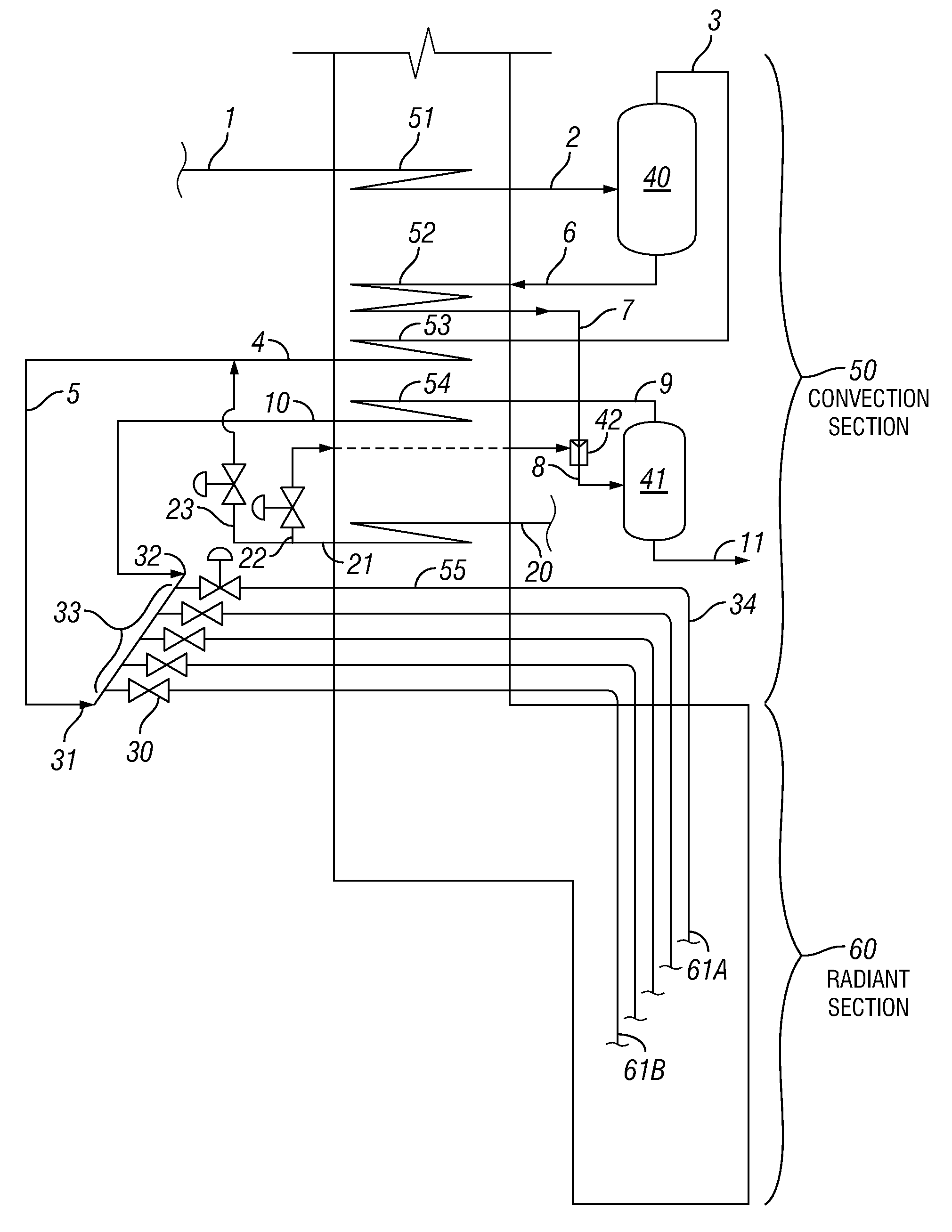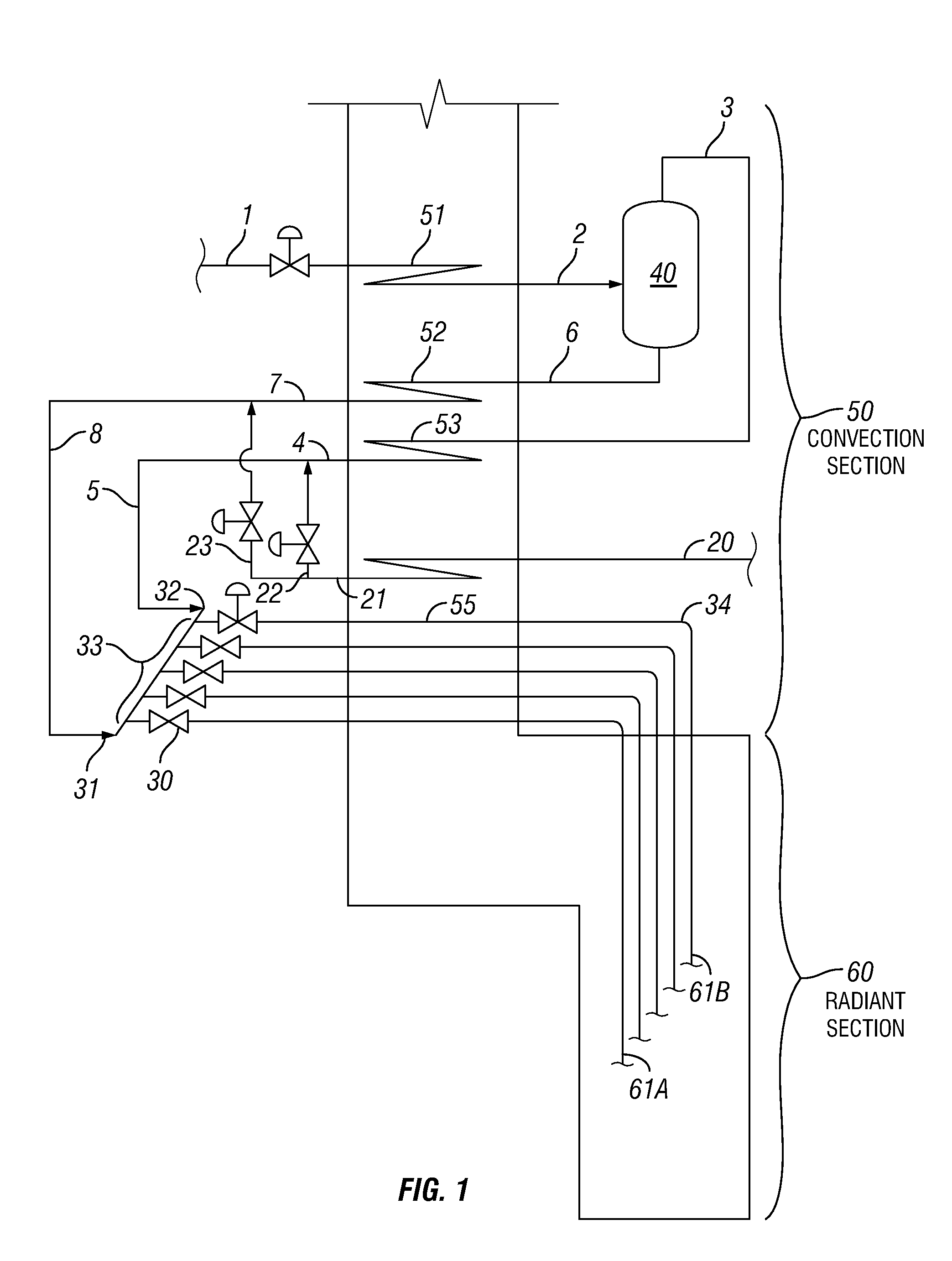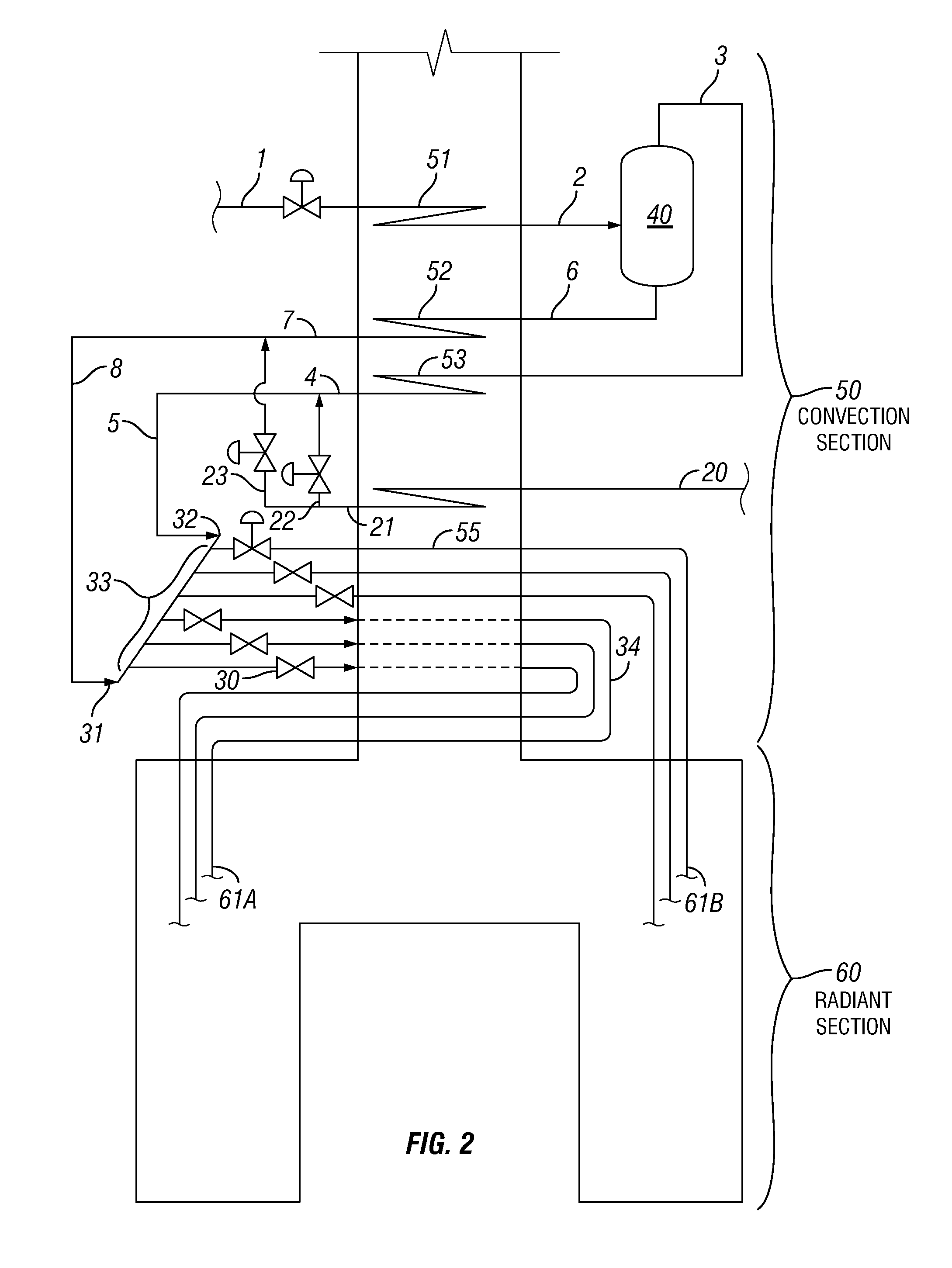Process for producing lower olefins from hydrocarbon feedstock utilizing partial vaporization and separately controlled sets of pyrolysis coils
a hydrocarbon feedstock and pyrolysis coil technology, applied in the hydrocarbon oil cracking process, hydrocarbon oil treatment products, etc., can solve the problems of limited conversion to olefins, and substantial processing of starting feedstock for a conventional olefin production plant, etc., to achieve the effect of enhancing the vaporization of these desirable feedstock components
- Summary
- Abstract
- Description
- Claims
- Application Information
AI Technical Summary
Benefits of technology
Problems solved by technology
Method used
Image
Examples
example 1
Processing of a Wide-Boiling Feed that can be Fully Vaporized with One V / L Separator
A) Process According to the Prior Art
[0071]The processing of a condensate feed in an existing furnace equipped with transfer line exchangers (TLEs), experienced very short TLE run-length at a COT of 1440° F. (782° C.) due to coking (end-of-run temperature achieved in only 7 days). In order to achieve reasonable TLE run-length, the COT had to be lowered to 1370° F. (743° C.). However, at such low cracking severity, as measured by (H / C) atomic ratio in the C5+ portion of the pyrolysis products, the pyrolysis yields were so low that cracking of this feed was made unprofitable. The short TLE run-length, at COT of 1440° F. (782° C.), was due to the heavy fraction of this wide-boiling range condensate (having a low hydrogen-content), being cracked to too high a severity, although the lighter portion of this feed was cracked to a low severity. Table 1 shows the feed properties of the light fraction (380° F....
example 2
Processing of a Wide-Boiling Feed that Contains a Non-Vaporizable Fraction (Crude Oil), with Two or Three V / L Separators
A. Process According to the Prior Art
[0075]This example illustrates how the concept of separate cracking of the light and heavy feed fractions of a wide-boiling feed can be applied to the processing of a crude oil or feed mixture containing a non-vaporizable fraction. The following table shows feed properties of the different fractions: light, medium, heavy and pitch fractions of this crude with their respective boiling ranges:
Feed PropertiesIBP-350350-650650-10501050+TotalLightMediumHeavyPitchWhole CrudeMol Wt Range30-140140-290290-630630-1100+30-1100+Wt % of Crude39.2229.5422.81 8.43100.00% H in Feed14.9913.6812.8512.02
[0076]The first V / L separator, flashed at ˜390° F. (˜199° C.), with a dilution steam to hydrocarbon vapor weight ratio of 0.5 and a pressure of 100 psig produces the light feed fraction (IBP-350, Initial Boiling Point to 350° F. (177° C.)) and a li...
PUM
 Login to View More
Login to View More Abstract
Description
Claims
Application Information
 Login to View More
Login to View More - R&D
- Intellectual Property
- Life Sciences
- Materials
- Tech Scout
- Unparalleled Data Quality
- Higher Quality Content
- 60% Fewer Hallucinations
Browse by: Latest US Patents, China's latest patents, Technical Efficacy Thesaurus, Application Domain, Technology Topic, Popular Technical Reports.
© 2025 PatSnap. All rights reserved.Legal|Privacy policy|Modern Slavery Act Transparency Statement|Sitemap|About US| Contact US: help@patsnap.com



